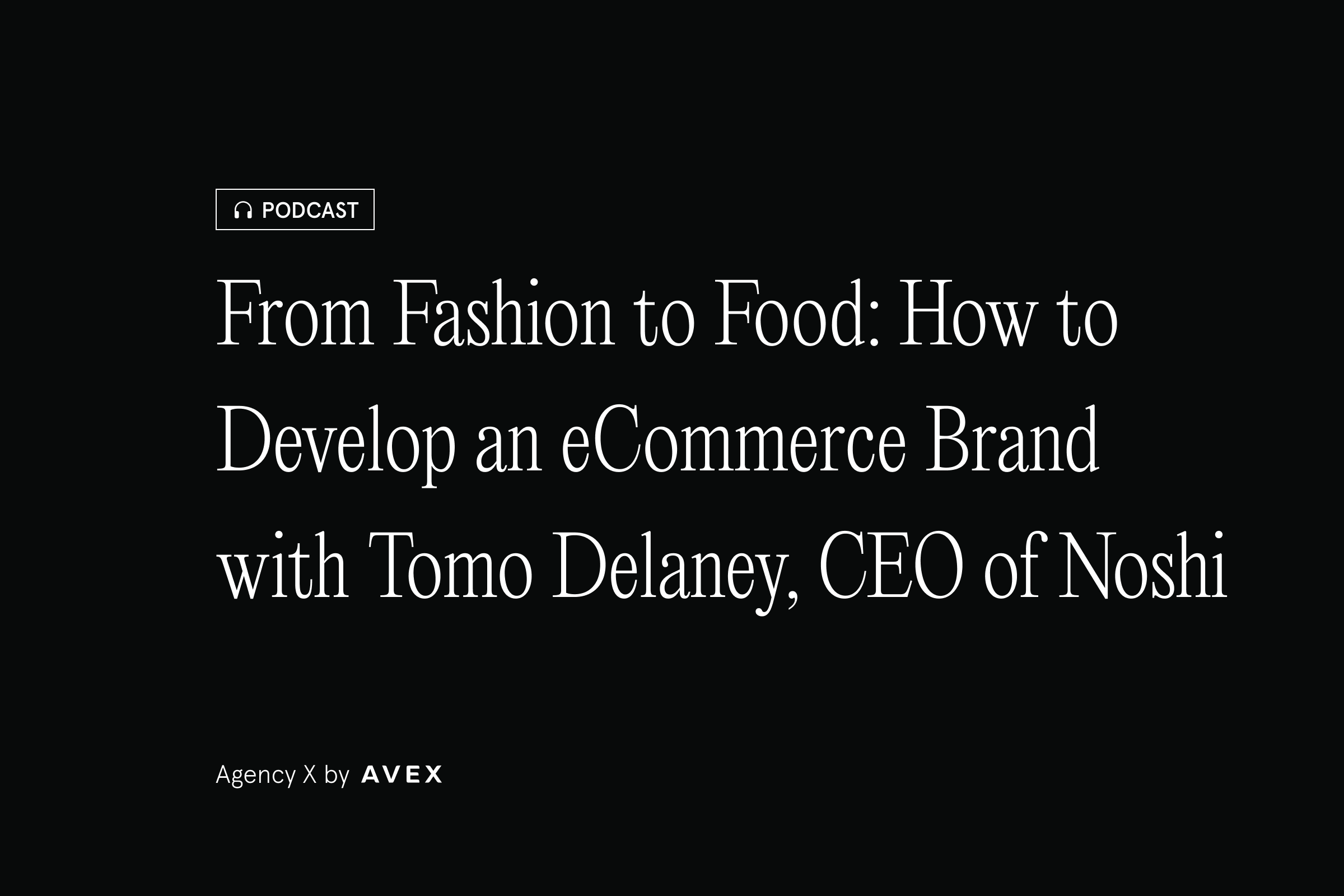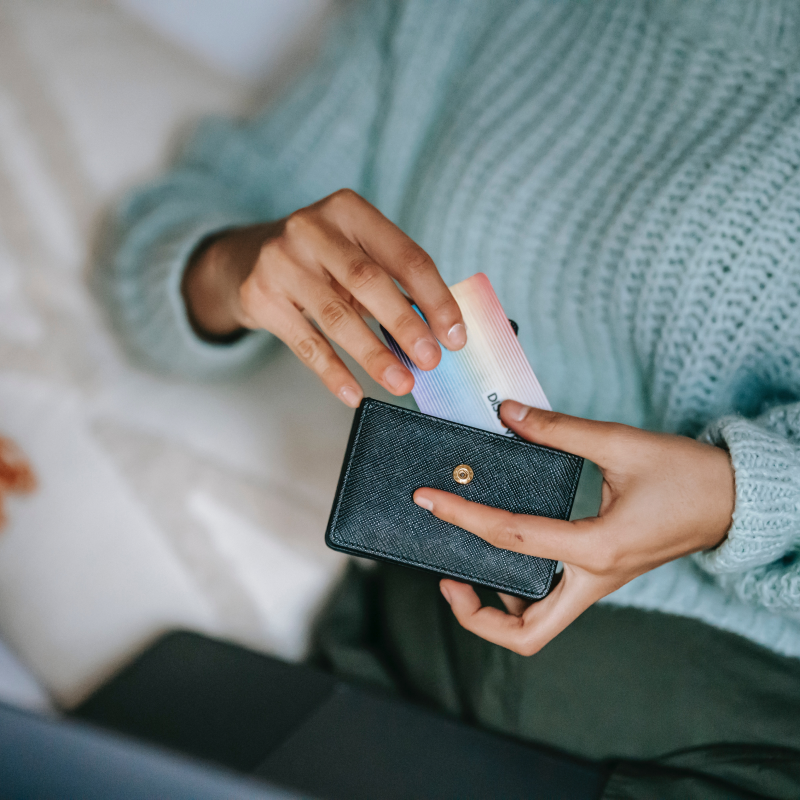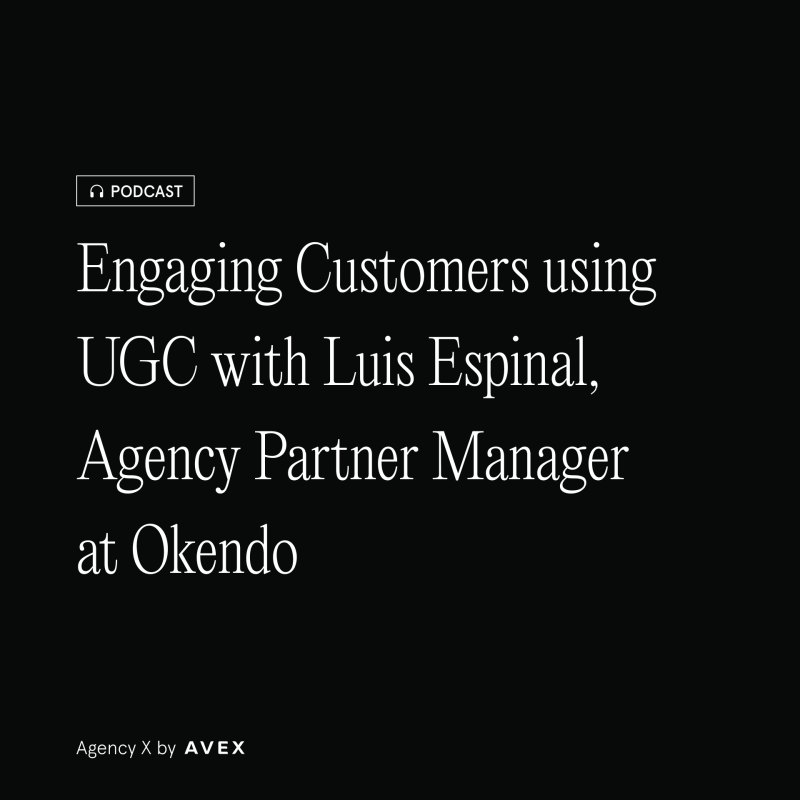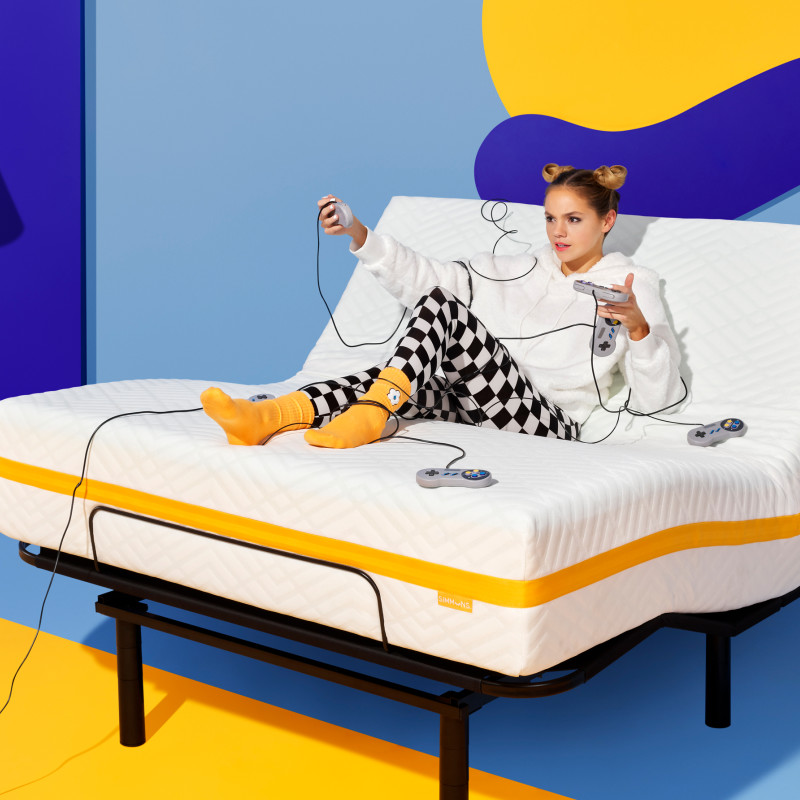Agency X Podcast: From Fashion to Food: How to Develop an eCommerce Brand with Tomo Delaney, CEO of Noshi

Quick Summary Read the most insightful quotes from our podcast episode with CEO and Founder of a kid’s food company, Tomo Delaney.
Below is a transcription of the highlights from our podcast episode featuring Tomo Delaney. Listen to the full episode here.
Introducing Tomo Delaney & Noshi
Leaving the Fashion Industry
Tomo 1:58 - 2:30 My name is Tomo Delaney, I am the CEO and founder of Noshi, which is a kid's organic food company. Before that, rather randomly, I worked in the fashion industry for my entire career for 22 years. When my second kid was born in 2010, I used it as an excuse to extricate myself in the fashion industry, the fashion was amazingly good, fun, exciting and glamorous when I was in my 20s, but it rapidly lost its appeal as I got older and was trying to bring up kids at the same time. So I used this as an excuse to jump ship.
The Creation of Noshi
Tomo 2:31 - 3:21 I found myself at home with a one-year-old and a five-year-old, both of whom work very, very picky eaters. I was spending a lot of time with my one-year-old, in his stroller, walking around grocery stores in Lower Manhattan looking for anything that might interest them enough to actually stop and want to get out to the table and actually pay attention to the food on the plate in front of them.
Noshi came about as a result of that after a family friend made a suggestion as to it. She said, “Why don't you present food to children by color, rather than flavor?” Within about two minutes of her saying that, I thought that's a really good idea, why not? Surely somebody must have done this before. Of course, they hadn't.
The Benefits of Noshi
Tomo 3:22 - 4:05 If you bring in an element of creativity and ask you to give kids the ability to draw a picture with their food on their food, you suddenly start ticking one box after another. I was looking at my two kids and thinking this is how you spend your time and kids have these amazing, limitless imaginations, and they're desperate to get all of these ideas out onto paper and into song and painting and drawing and telling you stories and having you tell them stories which fire their imagination more and more.
Why can't you write mealtimes into just an extended playtime and give them an excuse to want to get up to the table, to be excited to get up from the table, and actually have a little mission to complete while they're at the table.
The Problem Noshi Solves
Tomo 6:37 - 7:01 When they're three to seven years old, you ask them to do something, and they want to please you, they want to they want to impress you, they want to show you they can do this thing.
So if you say to them, hey, not only am I giving you the opportunity to go to the table and have fun by using this stuff, it's almost like it's sort of guilty pleasure for them. They can't quite believe that you're asking them to paint a picture on their food/to play with their food. Which is in contrast to our generation.
Tomo 7:02 - 7:40 We were always taught, don't play with your food. Why not? Millennial parents, who are our target audience, have got a completely different approach to mealtimes. But I know people are increasingly realizing that picky eaters--there's a lot of them out there. Why would you fight them?
Ultimately, you need them to eat food, and you need to be able to eat food that's as healthy as possible. So we're just ticking a number of boxes, we're giving them more freedom at the table, more of a way to express themselves, a creative outlet, a guilty pleasure.
How Fashion Product Photography Has Changed
Fashion Photography Rate Decrease
Tomo 12:55 - 13:52 I was getting paid really well and suddenly, as that phase in my career progressed, just before the birth of our second kid, it just disappeared overnight.
The brands like Donna Karan, Calvin Klein, and the stores like Bloomingdale's, they all suddenly realized that instead of paying people like me $3,000 a day to photograph 25 shoes on a white background, they could get a 22-year-old college graduate, build a studio for themselves in their own office building, and put that person on a $35,000 a year salary to take the same picture I was taking.
So all the creativity seemed to be being sucked out of the fashion industry in favor of just a shoe on a white background and a website that sold 100 shoes photographed on the same day on the same white background. As a creative, I found that quite depressing.
The Difference in Ad Budgets
Tomo 14:02 - 14:42 What I've noticed recently, especially in fashion, is the budgets aren't anywhere close to what they used to be. I used to I worked on high fashion advertising campaigns where there was a $20 million budget for a two-day shoot, including the fee for the celebrity. Of course, most of which was going to them, but the amounts of money we were getting to spend on a two-day shoot--all of that's gone now, apart with some very notable exceptions.
But the fashion websites that were just doing this white background photography, they're all slowly finding a way of bringing creativity back into it and bringing their individual aesthetic into their websites.
Are you seeing 30% of revenue from Email & SMS Marketing? See how we can help.
Working with Smaller Budgets for DTC Brands
Incorporating User-Generated Content
John 16:07 - 16:44 There are interesting ways that smaller brands can be able to leverage smaller budgets, whether that's working with influencers or getting user-generated content and incorporating that into the website. That really resonates with customers a lot more than just tons of lifestyle imagery and things like that, or just the product.
Especially with a brand like yours, I do think it's important to have that. People want to see social proof on the site, they want to see kids using it, and them loving it, like happy kids in real life, not just faking that as a commercial.
The Challenges of Starting a CPG eCommerce Brand
Stepping Into the Food Industry
Tomo 17:35 - 18:23 I had no idea as to how complicated it was to launch CPG brand. I had no idea how difficult it was to get a foot in the door of the food industry, which is an insane industry. If you think the fashion industry is crazy, the food industry--it's been a ride, and that's for sure.
The plan normally with a brand like ours would be, you would build up and build out through independent stores, into smaller chain grocery stores, and the ultimate goal is to end up in Walmart. We started in Walmart, because I was at Expo West and a really young buyer from Walmart suddenly appeared out of the crowd. In the space of two or three months, we had the green light, and we went into Walmart six months later.
Selling Products at Walmart
Tomo 18:24 - 19:13 That in itself is a challenge because Walmart obviously is the size it is. And on the one hand, they have been so amazing to work with. I can't say enough good things about them, they are so good at what they do, and they are so accommodating of small founder-led brands like ours.
They nurture you, and they help you, but the bottom line is they have hundreds, thousands of stores. And there's a line in the sand. If you miss a delivery date on this purchase order, we're going to have a problem. You suddenly find yourself in 400-600 stores, and you've got to produce enough product to get into those stores and to fill all the initial POs. But you've also always got to have enough products on hand to fill any purchase orders that come through, and they come through every single day.
Budget vs Sales
Tomo 19:14 - 20:07 So for a very, very small brand like us, we're entirely self-funded. We've got a small handful of friends and family investment, but beyond that, it's been entirely self-funded. We've never had a marketing budget. So that's where the pressure is.
We've been given this golden opportunity by Walmart and I've had conversations with them wherein they have explained to me how interesting they think this brand is, but we've done it backward. Again, because that was never really apparent to me. I was like, Oh, we gotta be in Walmart now. That's great. Yeah. Of course, at the time, I was like bloody hell. This is real. This is big. But the only daunting part of it is making sure we can keep up with it.
Store Product Placement
Tomo 24:49 - 25:49 Being somewhere like Walmart where you are in hundreds of stores, it was very important to us that it was placed correctly in the store. We were taken on by Walmart as part of an innovation set that they did, which was amazing.
It is an innovative product, we’re eternally grateful that they saw that and that they took us on, but I always knew and had said to them a couple of times--this really needs to be in your store in the syrup aisle because what it is is an alternative to maple syrup.
I unwittingly designed a product for pancake and waffle breakfasts and because I'm British, I had no idea how big a deal pancake and waffle breakfasts were in the US. But I somehow without realizing it designed a product specifically to go with pancake and waffle breakfast, and it goes great on oatmeal in the wintertime as well. But it's going to be used mostly on pancakes and waffles and so having it in the syrup style next to the maple syrup, I always knew would explain the product to parents.



